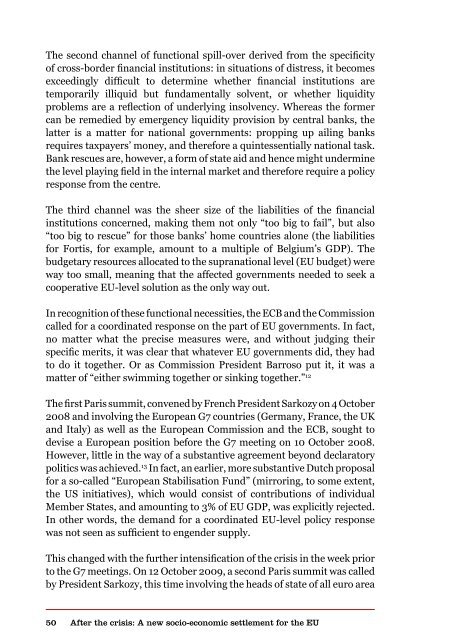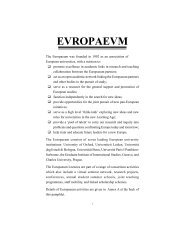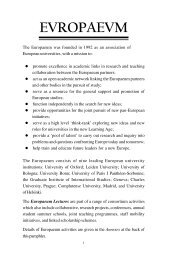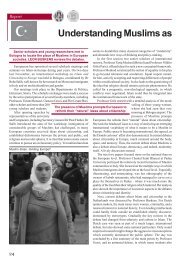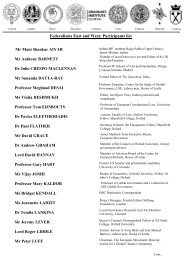Authors Iain Begg | Gabriel Glöckler | Anke Hassel ... - The Europaeum
Authors Iain Begg | Gabriel Glöckler | Anke Hassel ... - The Europaeum
Authors Iain Begg | Gabriel Glöckler | Anke Hassel ... - The Europaeum
You also want an ePaper? Increase the reach of your titles
YUMPU automatically turns print PDFs into web optimized ePapers that Google loves.
<strong>The</strong> second channel of functional spill-over derived from the specificity<br />
of cross-border financial institutions: in situations of distress, it becomes<br />
exceedingly difficult to determine whether financial institutions are<br />
temporarily illiquid but fundamentally solvent, or whether liquidity<br />
problems are a reflection of underlying insolvency. Whereas the former<br />
can be remedied by emergency liquidity provision by central banks, the<br />
latter is a matter for national governments: propping up ailing banks<br />
requires taxpayers’ money, and therefore a quintessentially national task.<br />
Bank rescues are, however, a form of state aid and hence might undermine<br />
the level playing field in the internal market and therefore require a policy<br />
response from the centre.<br />
<strong>The</strong> third channel was the sheer size of the liabilities of the financial<br />
institutions concerned, making them not only “too big to fail”, but also<br />
“too big to rescue” for those banks’ home countries alone (the liabilities<br />
for Fortis, for example, amount to a multiple of Belgium’s GDP). <strong>The</strong><br />
budgetary resources allocated to the supranational level (EU budget) were<br />
way too small, meaning that the affected governments needed to seek a<br />
cooperative EU-level solution as the only way out.<br />
In recognition of these functional necessities, the ECB and the Commission<br />
called for a coordinated response on the part of EU governments. In fact,<br />
no matter what the precise measures were, and without judging their<br />
specific merits, it was clear that whatever EU governments did, they had<br />
to do it together. Or as Commission President Barroso put it, it was a<br />
matter of “either swimming together or sinking together.” 12<br />
<strong>The</strong> first Paris summit, convened by French President Sarkozy on 4 October<br />
2008 and involving the European G7 countries (Germany, France, the UK<br />
and Italy) as well as the European Commission and the ECB, sought to<br />
devise a European position before the G7 meeting on 10 October 2008.<br />
However, little in the way of a substantive agreement beyond declaratory<br />
politics was achieved. 13 In fact, an earlier, more substantive Dutch proposal<br />
for a so-called “European Stabilisation Fund” (mirroring, to some extent,<br />
the US initiatives), which would consist of contributions of individual<br />
Member States, and amounting to 3% of EU GDP, was explicitly rejected.<br />
In other words, the demand for a coordinated EU-level policy response<br />
was not seen as sufficient to engender supply.<br />
This changed with the further intensification of the crisis in the week prior<br />
to the G7 meetings. On 12 October 2009, a second Paris summit was called<br />
by President Sarkozy, this time involving the heads of state of all euro area<br />
50<br />
After the crisis: A new socio-economic settlement for the EU


